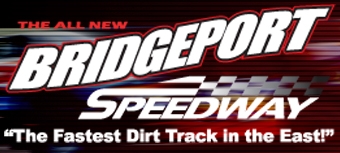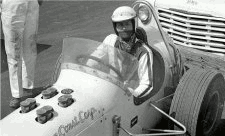IndyCar re-ups with Firestone, going with side-by-side restarts
ByBridgestone Americas Tire Operations and INDYCAR announced that Firestone will continue to serve as the sole tire supplier to the IZOD IndyCar Series through the 2013 season.
Late last week the companies announced that they would allow the Firestone sponsorship and supply contract to expire at the end of the 2011 season.
“At the end of last week, we had reached the deadline where both organizations had to make a decision regarding the future to prepare our individual operations for the long term,” INDYCAR CEO Randy Bernard said. “This is one of those decisions that it is imperative that you have the team owners 100 percent behind you. Early this week we called a meeting to walk the team owners through the process and hear their input. I’m happy to say we walk as one with Firestone.
“We feel that this new supply agreement will benefit everyone. It provides a proven safe and reliable Firestone product for the transition to the all-new cars for 2012. We have to thank everyone at Firestone for working with us to help ensure the best for the long-term growth of our sport."
Firestone has supplied tires to the IZOD IndyCar Series since 1996 and has been the official tire supplier since 2002. The new agreement does not include Firestone Indy Lights, the developmental series for drivers and teams striving to reach the top level of open-wheel racing in North America. Firestone will remain as title sponsor and tire supplier of the development series through this season.
“INDYCAR called a meeting to inform the team owners of Firestone’s departure,” said Dennis Reinbold, co-owner of Dreyer & Reinbold Racing. “When we learned of this, we encouraged INDYCAR to check with Firestone to see if there might be any chance to continue. We feel that it is important to maintain continuity with their excellent tires as we transition to the new car for 2012.
"The team owners are collectively very relieved that Firestone had an open mind and that they were able to reach this agreement with INDYCAR. Firestone Racing tires are not only important from a safety and reliability standpoint, but they contribute greatly to the wheel-to-wheel competition for which our sport is famous.”
Firestone tires are manufactured in Akron, Ohio, and the decision likely will affect almost 50 hourly workers and 20 salaried employees. The Firestone brand has been associated with racing since 1911 when its tires were on the winnng car of the inaugural Indianapolis 500.
“We are pleased that we were able to reach this agreement with INDYCAR,” Firestone Racing executive director Al Speyer said. “As we prepare to celebrate our involvement in the 100th anniversary of the first Indianapolis 500 Mile Race, we are also focused on the future and the great opportunities that lie ahead.
"While we’ve reached the pinnacle of success in the IndyCar racing, we’re happy to extend our relationship with the IZOD IndyCar Series through 2013 and to continue our winning partnership. Meanwhile, we will continue to evaluate all options for promoting the Firestone brand inside and outside of motorsports, as the Firestone brand is a very important part of our business.”
Nashville, Tenn.-based Bridgestone Americas Tire Operations is a unit of Bridgestone Americas, Inc., whose parent company, Bridgestone Corporation, is the world's largest tire and rubber company. Reporting to the BATO business unit are the company's Latin American tire operations; the U.S. and Canadian consumer tire businesses; the U.S. and Canadian commercial tire businesses; and Bridgestone Retail Operations, which operates the largest network of company-owned automotive service providers in the world. BATO develops, manufactures and markets Bridgestone, Firestone and associate brand tires.
Drama will be intensified at IZOD IndyCar Series races this season with the inclusion of side-by-side restarts at all venues, starting with the season-opening Honda Grand Prix of St. Petersburg on March 27.
The IZOD IndyCar Series decided to adopt side-by-side restarts on road and street circuits following input from its drivers and teams, complementing the rule on ovals announced Jan. 11 by president of competition and racing operations Brian Barnhart. He also announced that the restart zone would move closer to the start-finish line.
“After seeking input following our initial restart announcement, we felt it was best to be consistent with the rule and use it at every track,” Barnhart said. “Whether on short ovals, superspeedways, temporary circuits or road courses, side-by-side restarts will certainly be entertaining and further intensify our on-track action.
“We are still contemplating adding a ‘free pass’ element, often referred to as ‘Lucky Dog’ by TV commentators, to the restart procedure but we want to hear from the fans.”
Procedures immediately following a yellow caution period and leading up to resumption of green flag racing at each event include:
• Once the indicators of caution are displayed, cars are grouped single file according to their running order behind the safety car. Any car that has passed the pit commit line at the time the caution is called may proceed without penalty to pit lane for service, blend at pit out and rejoin the field. This eliminates the "no man's land."
• When IZOD IndyCar Series officials declare the pits open, lead-lap cars are eligible to pit (displayed by a plus sign at pit in).
• All remaining cars will pit on the next lap (displayed by a minus sign at pit in). Cars enter and leave pit road at an equal, controlled speed and are placed behind the lead-lap cars in order of when they cross the blend line.
• Once cars are grouped behind the safety car and the race leader is established, all cars between the safety car and the race leader are waved around to take their positions at the rear of the ?eld. This allows lapped cars that did not pit to get one lap back and the race leader to lead the ?eld to the green ?ag on the restart.
• The race leader will have the option to restart on the left or the right and the second-place car lining up on the opposite side. This only applies to the cars restarting on the front row; the remaining cars will line up side-by-side for the restart as the grid was set for the start of the race (i.e. driver’s right or driver’s left).
The first oval race of the season is the Indianapolis 500 on May 29. The restart zone for all ovals will be on the frontstretch.
“Most of the ovals we run two- and three-wide anyway so what’s the difference?” Service Central Chip Ganassi Racing driver Graham Rahal said. “It will make it more exciting for the fans, there will be more passes and there will be more crashes. It’s a fact for those team owners. That’s going to emphasize you and your row getting the jump pretty good.”

